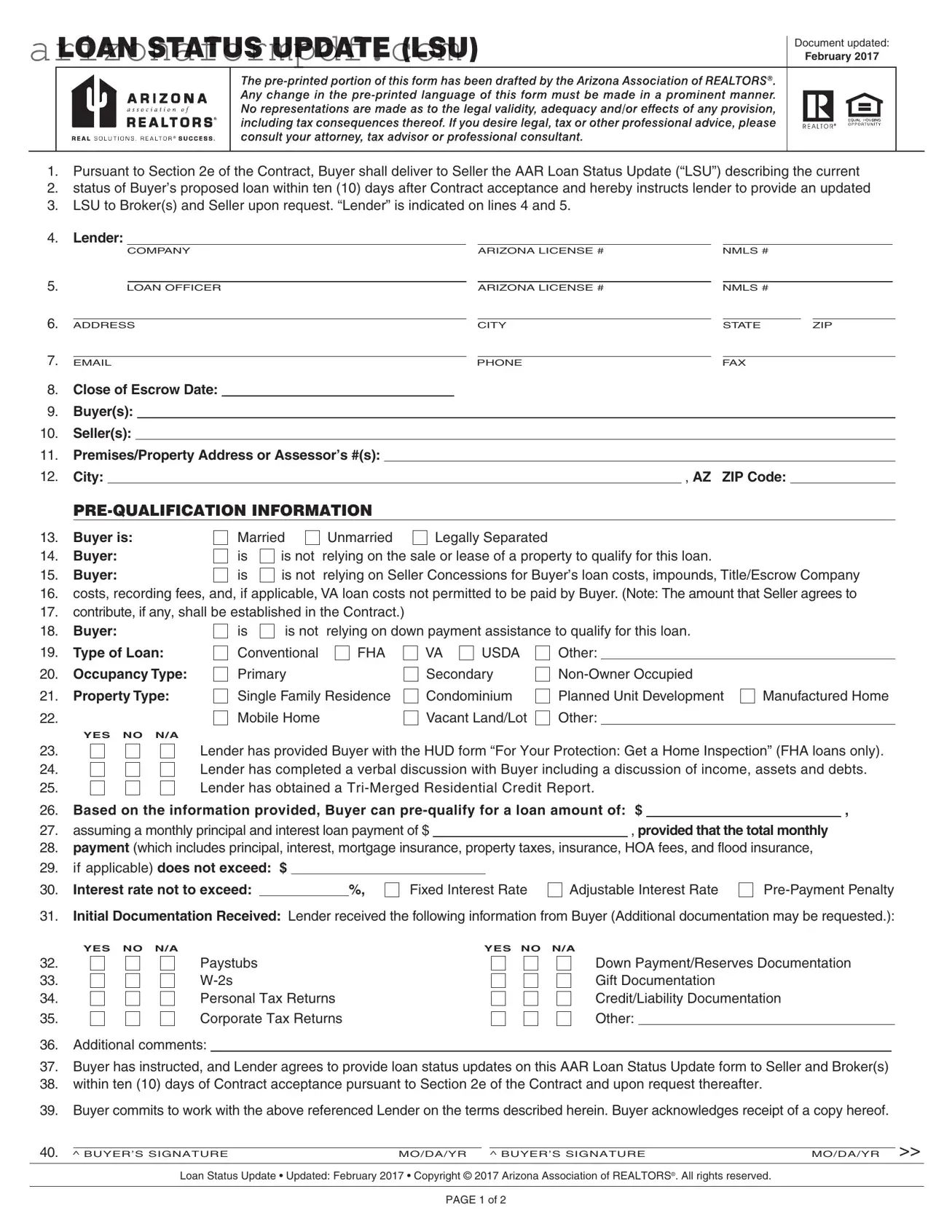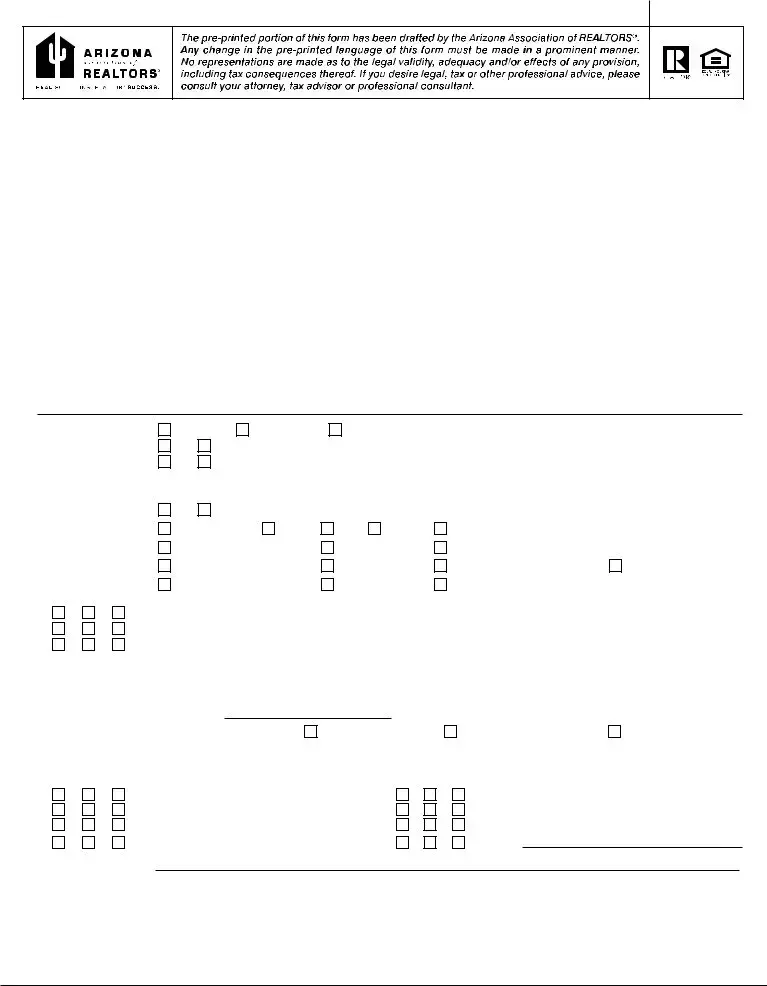What is the purpose of the Arizona LSU form?
The Arizona Loan Status Update (LSU) form is used to provide updates on the status of a buyer's proposed loan. It ensures that the seller and broker receive timely information regarding the loan process, helping to keep all parties informed during the transaction.
When must the LSU be delivered?
The buyer is required to deliver the LSU to the seller within five days after the contract is accepted. This prompt action helps maintain transparency and keeps the transaction moving smoothly.
Who is responsible for providing updates after the initial LSU?
The lender is responsible for providing updated loan status information to the broker and seller upon request. This ongoing communication is crucial for keeping everyone informed of any changes in the loan status.
What information is included in the LSU?
The LSU includes details about the lender, loan officer, loan type, occupancy type, property type, and pre-qualification information. It also documents the buyer's financial situation, including income, assets, and debts, as well as any necessary documentation received by the lender.
What types of loans are covered by the LSU?
The LSU can cover various loan types, including Conventional, FHA, VA, USDA, and others. The specific type of loan will be indicated in the form, allowing all parties to understand the financing being utilized.
What happens if the buyer relies on seller concessions?
If the buyer is relying on seller concessions to cover loan costs, this must be clearly stated in the LSU. The amount the seller agrees to contribute will be established in the contract, ensuring that all parties are aware of the financial arrangements.
What documentation does the lender need from the buyer?
The lender typically requires various documents from the buyer, including paystubs, W-2s, personal and corporate tax returns, and documentation for down payment sources. The LSU outlines which documents have been received and any additional documentation that may be needed.
How does the buyer know if they can pre-qualify for a loan?
The LSU provides a pre-qualification amount based on the buyer's financial information. This amount is contingent upon the buyer's total monthly payment not exceeding a specified limit, which includes principal, interest, and other related costs.
What is the significance of the closing loan documents?
Closing loan documents are essential for finalizing the loan process. The LSU tracks whether these documents have been ordered and sent to the escrow company, ensuring that all necessary steps are completed before closing.
How does the closing process work?
Closing occurs when the deed is recorded at the appropriate county recorder’s office. The LSU helps track the progress of the closing process, ensuring that all conditions are met and funds are properly handled before the transaction is finalized.


